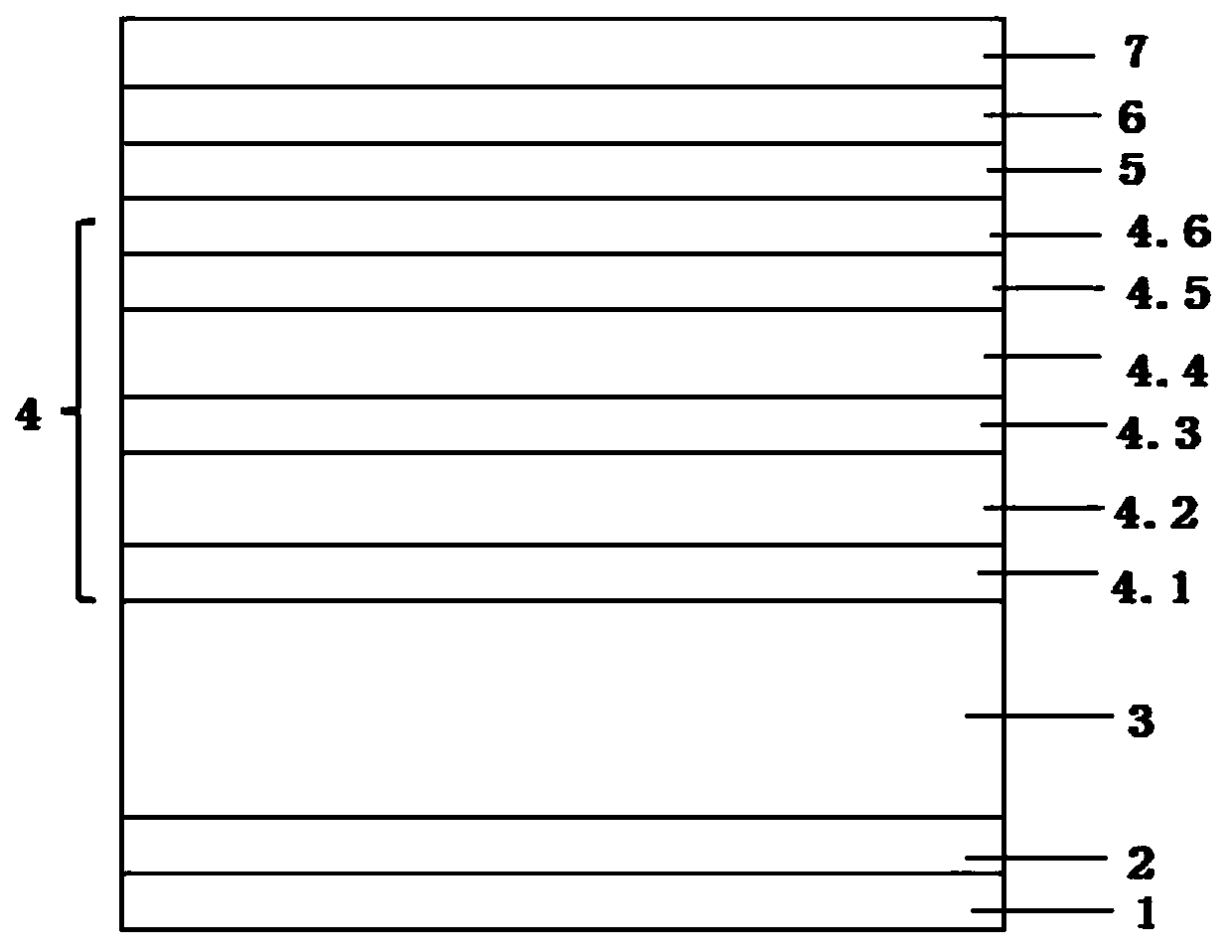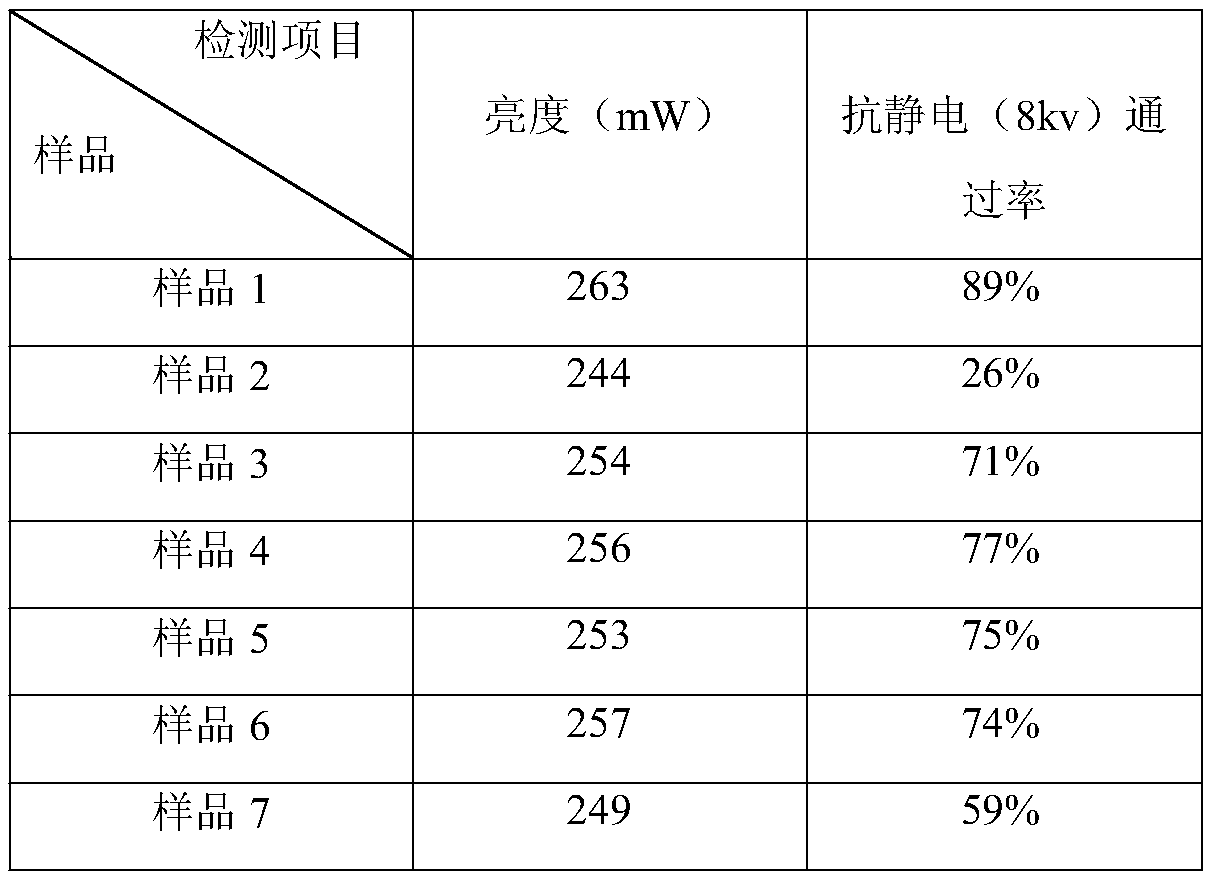LED epitaxial growth method
An epitaxial growth and alternate growth technology, which is applied in the direction of electrical components, circuits, semiconductor devices, etc., can solve the problems of lattice mismatch, weakened antistatic ability of LED devices, and ineffective reduction of dislocation density.
- Summary
- Abstract
- Description
- Claims
- Application Information
AI Technical Summary
Problems solved by technology
Method used
Image
Examples
Embodiment 1
[0045] A LED epitaxial growth method, including the process of growing a composite N-type layer, the epitaxial growth method is specifically as follows:
[0046] Step 1, processing the substrate 1;
[0047] Step 2, growing a low-temperature buffer gallium nitride layer 2 on the substrate 1;
[0048] Step 3, growing an undoped gallium nitride layer 3;
[0049] Step 4, growing a composite N-type layer 4;
[0050] Step 5, growing the multi-quantum well light-emitting layer 5;
[0051] Step 6, growing an electron blocking layer 6 doped with aluminum and magnesium;
[0052] Step 7, growing a high-temperature P-type gallium nitride layer 7 doped with magnesium;
[0053] Step 8. Under the condition of temperature of 750-800° C. and pressure of 500-800 mbar, anneal in the furnace for 25-30 minutes, turn off the heating system and gas supply system, and then cool down with the furnace.
[0054] In Example 1, a high-brightness gallium nitride-based LED epitaxial wafer was grown on ...
PUM
| Property | Measurement | Unit |
|---|---|---|
| Thickness | aaaaa | aaaaa |
| Thickness | aaaaa | aaaaa |
| Thickness | aaaaa | aaaaa |
Abstract
Description
Claims
Application Information
 Login to View More
Login to View More - R&D
- Intellectual Property
- Life Sciences
- Materials
- Tech Scout
- Unparalleled Data Quality
- Higher Quality Content
- 60% Fewer Hallucinations
Browse by: Latest US Patents, China's latest patents, Technical Efficacy Thesaurus, Application Domain, Technology Topic, Popular Technical Reports.
© 2025 PatSnap. All rights reserved.Legal|Privacy policy|Modern Slavery Act Transparency Statement|Sitemap|About US| Contact US: help@patsnap.com


